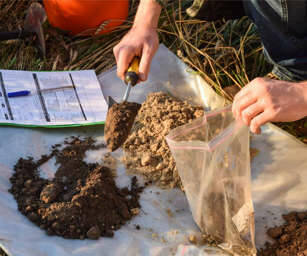Soil is the foundation of a successful growing season. Soil testing is the easiest thing that people tend to overlook. A simple test provides essential information about nutrient levels, pH balance, and overall soil health.
Key factors that affect plant health can be identified with a basic soil test. It measures levels of essential nutrients like nitrogen, phosphorus and potassium, which are necessary for strong roots, lush foliage, and fruit production. A test can also reveal imbalances, such as excessive nutrients that may hinder growth or contribute to environmental problems.
For example, due to natural geology combined with years of dairy farming (think manure), the soil on the Olympic Peninsula tends to be remarkably high in phosphorus. Excess phosphorus in soil can lead to imbalances that hinder plant uptake of other essential nutrients like zinc and iron. It can also pollute nearby waterways, due to runoff, causing algae bloom and harm to aquatic life.
Although reducing phosphorus levels in soil poses challenges, recognizing this condition enables informed decisions regarding future fertilizer application. In addition to using fertilizer with low or zero phosphorus, gardeners will know to watch for signs of zinc and iron deficiencies so they can be treated.
Soil testing for pH measurements is important because most plants thrive in soil with a pH between 6.0 and 7.5. However, some plants (like blueberries) prefer more acidic conditions. If soil pH is too high (alkaline) or too low (acidic), plants may struggle to absorb nutrients, leading to stunted growth or yellowing leaves.
It is recommended that gardeners test their soil regularly, about every two to three years. Testing can help prevent common gardening problems, improve plant growth, and reduce the need for unnecessary fertilizers. It is good for the environment, and it can save time, money and effort as well. If you notice problems in the garden such as poor plant growth or a reduction in productivity, testing sooner can help diagnose the problem.
For more information about soil testing in Clallam County, visit the Clallam Conservation District webpage at clallamcd.org. Their page explains key details on how to properly collect the soil, drop-off location, and collection dates. The soil report will come back with recommendations on how to best amend the soil.
Green Thumb Series
At 1 p.m. on Thursday, April 10, Clallam County Noxious Weed Coordinator Christina St. John will present “Identification and Control of Noxious Weeds” as part of the Green Thumb Education Series. The free presentation will be at St. Andrew’s Episcopal Church, 510 E. Park Ave. in Port Angeles.
_________________
Susan Kalmar is a WSU-certified Clallam County Master Gardener.



